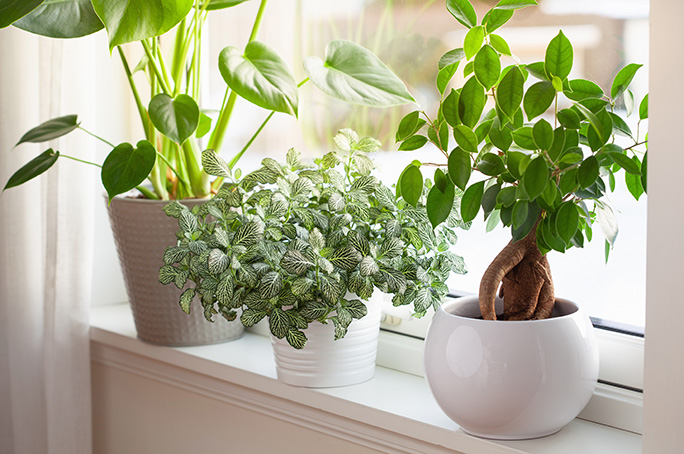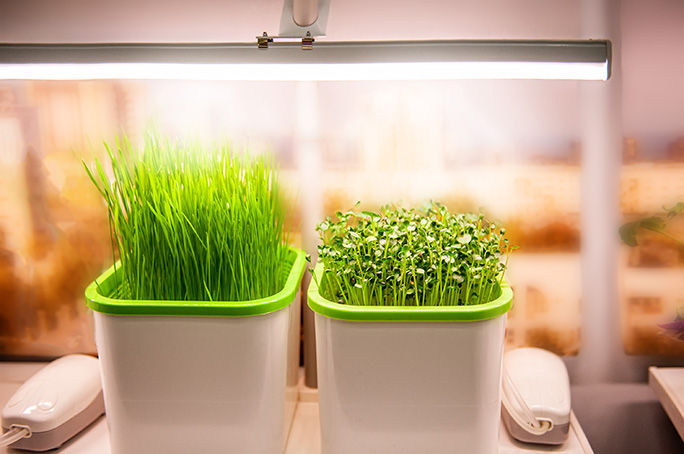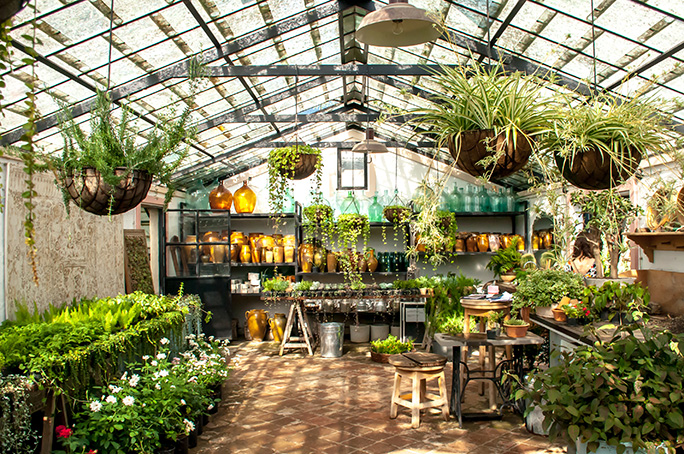Providing your plants with proper lighting is one of the most important yet challenging factors, especially if your indoor garden has exotic plants. Stores offer numerous different grow lights to gardeners whose natural lighting conditions can’t meet the needs of their plants. Read below to learn about the pros and cons of every type of light and how to combine them effectively.
First of all, you need to understand your plants’ needs. Red and blue colors of the light spectrum aren’t only responsible for proper growth, blooming, and fruiting but are also the most suitable for photosynthesis—the main process in a plant’s life. At the same time, excessive red light leads to leggy growth and pale foliage, while too much blue light stunts growth and makes leaves small and dark. The green color is almost entirely reflected and used less. Keeping this in mind, let’s move on to the differences between natural and artificial lighting.
Sunlight

Supporting all the Earth life, sunlight has been letting plants grow, develop, and photosynthesize from time immemorial. It’s the most obvious lighting option both for indoor and outdoor species.
Sunlight Pros
- Free and unlimited. Natural lighting costs nothing and even produces energy itself, being the only eco-friendly option.
- Stable. Since it’s a quite unchangeable source of energy, in most cases, all you need is to find an optimal place for your plant once and then rotate it from time to time and enjoy it thriving. Of course, seasonal and weather changes occur too, but they are usually beneficial since plants need different light intensity throughout the year.
- Has the perfect wavelength. The sunlight spectrum can provide flora with the light of all the necessary colors. Both blooming and foliage plants would grow properly under it. However, it’s only partially true for houseplants, since glass can block part of the UV spectrum.
Sunlight Cons
- Isn’t the same in different regions. Modern gardening isn’t limited to cultivating regional species, so quite often plants are grown in climates that they aren’t typical for. For example, it’s barely possible to make cacti thrive in cold regions with few sunny days and a small amount of daylight.
- May create dangerous conditions. Warmth- and light-loving plants are often located right next to south-facing windows, which seems to be the obvious choice. However, glass overheats extremely in summer, causing the leaves that touch it to get scorched. You can solve this problem, though, by shielding your plant with a curtain. At the same time, plants placed on a windowsill to make the most of the winter sunlight can suffer from cold drafts.
- Can’t get to every corner of your house. Houses, as well as gardens, are limited in suitable places for plants. If you don’t have south-facing windows, your light-loving plant won’t grow well even if it’s warm and sunny outside.
So, despite being the key to healthy growth, sunlight isn’t always available in proper quality and quantity. In this case, grow lights are here to help.
Artificial Lighting

Becoming more popular each day, grow lights are used nowadays not only to supplement insufficient natural lighting but also to replace it. As good as sunlight is, its excess is equally harmful to shade-loving plants as having a tropical species on a north-facing windowsill.
Artificial Lighting Pros
- Always at hand. Whether you are growing a tropical plant or just want to make the most of the blooming period, grow lights will help when the season can’t boast plentiful sunlight.
- Perfect for seedlings. While only some recently sown seeds need bright lighting, seedlings are extremely greedy for it. Therefore, using artificial lighting significantly increases the chance of growing a healthy plant. By placing seedlings no more than 6 in (15 cm) beneath a light source, you will ensure they are growing strong and evenly.
- Lets you control the amount and quality of daylight. Combining different types of lights and adjusting the time they are on, you can create perfect lighting conditions for your plants, seemingly possible only in the wild.
- Suitable for photosynthesis. Even usual white lights allow plants to photosynthesize.
An interesting fact: an experiment held at Purdue University has proved that LED lights can potentially replace natural lighting. The researchers managed to grow the leaf lettuce with the help of red and blue LED bulbs at a ratio of 95 to 5. They also hope to figure out how to increase and decrease lighting to adjust it to the growth stages of different plants. Of course, it’s still optimal to use sunlight if possible, but this experiment shows that people can grow plants in space.
Artificial Lighting Cons
- Can provide a limited spectrum. Grow lights often produce either red, blue, yellow, or green colors. So you need to mix different bulbs and adjust their intensity to create the optimal conditions for your plant’s healthy growth. However, white lights provide a full spectrum.
- Less efficient. In general, you need 13 hours of artificial lighting to substitute for 6 hours of natural lighting.
- Expensive. Even the cheapest and questionably safe bulbs consume a lot of energy. Halogen and horticultural lights cost a lot.
- Can be dangerous. Although fluorescent and LED lamps most used for growing plants nowadays don’t overheat, being in constant contact with them, your plant’s leaves may get burned.
- Environmentally unfriendly. Apart from consuming energy, most grow lights include non-recyclable materials.
How to Combine Natural and Artificial Lighting

First of all, don’t believe grow lights sellers assuring you that nowadays you don’t need sunlight at all. The rule of thumb is to provide your plant with the biggest amount of sunlight your house or garden can offer. Even if you have only north-facing windows, find the most well-lit spots in your house and improve the available conditions with the help of grow lights.
The best example of such a combination is growing plants in greenhouses. Experienced gardeners can make the most of sunlight and supplement it with artificial lighting, enjoying great harvests as a result. This method is more eco-friendly than creating entirely artificial conditions and doesn’t let them fail because of unstable weather.
Mind you, avoid lighting your plants for 24 hours unless you are growing seedlings. Plants can tolerate and benefit from this regime only during the period of active growth. Like any living thing, they can’t work actively without rest and need periods of darkness to bloom and fruit properly. Most houseplants require up to 16 hours of light per day during the warmest season. Moreover, some gardeners place blooming plants in a dark place for 1–2 days to trigger faster flowering. Lighting your plants 24/7 isn’t only inefficient but can lead to their death.
The key to your plants’ well-being is mimicking their natural growing conditions. We recommend that you make the most of the available sunlight and take your time developing the optimal lighting schedule for your garden, both indoor and outdoor. Make sure to learn the lighting needs of your plants and the technical performance of different types of grow lights, which you can find in our app. Good luck on your journey to a healthy garden!
